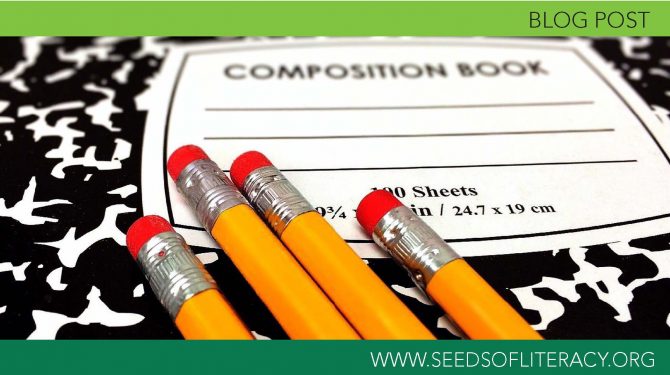The 4 Steps in the Writing Process

~ There Is No Magic Pencil ~
When I was in school, the boy who sat next to me said he believed my pencil was magic. From the moment my pencil hit the paper, the words would flow. Meanwhile, he would stare at the page for what seemed like eternity before finally writing his own piece.
He may have thought my pencil was magic, but in retrospect, he was the more advanced writer. The time he spent staring while I hastily scrawled, erased, and rewrote, was time he spent reflecting on the story he wanted to tell. He didn’t make it up as he went along — he carefully crafted it in his mind before ever committing a single word to print. The result? His erasers remained intact and my work rambled, often off topic.
WHAT IS THE WRITING PROCESS?
A great essay, blog post, novel, or even a tweet doesn’t just happen. There is no magic pencil. Like any process, writing has multiple steps: Prewriting, Drafting, Revising, and Editing. It takes practice, and every time you do it, it starts with an idea.
Prewriting
Prewriting, as the name implies, happens BEFORE you write and it’s the step I skipped in school. Prewriting is when brainstorming and outlining happens.
All writers need to brainstorm, talk to others, and take inspiration from the world around them. Whether it be music, a political statement, a photograph, a childhood story or memory, even a blade of grass, the world around us can provide the spark needed to write. Brainstorming allows writers to think and observe before putting pen to page.
Once writers find that inspiration, the next step is to create an outline. Outlines are important for reasons beyond the fact that every English teacher says so — outlines act as a roadmap for what you are about to write.
Drafting
Drafting is the “first pass” or “brain dump” of everything developed during prewriting. Don’t worry about spelling and grammar while in this drafting stage, but instead focus on turning ideas into sentences and paragraphs. The outline created in the prewriting stage, if followed, can help create a clear path for the writing. This stage might take only a few minutes or several hours, but it’s important to get as much written as possible in this initial draft.
Revisions
The revision stage is often incorrectly used synonymously with editing. Large changes happen in this stage. Entire sections may be added or deleted, the focus of the piece may change, and supporting evidence may be elaborated on or even added or removed completely. In the simplest of implementations, it’s like when you reread a text message right before you send it, and then quickly delete half of it.
Although editing is involved, revising includes much more than just fixing the spelling mistakes. This stage is often a good opportunity for writers to get a second opinion on their work. Having someone else look at your work allows you to see if you’re taken a reader’s needs into consideration with your piece. Does it make sense to him? Does it answer her questions? Perhaps he has a suggestion for a more compelling introduction.
Editing
Once all the heavy lifting is done in the revision stage, and the piece has the foundation to make it structurally sound, it’s time to edit. Word by word, sentence by sentence, spelling and grammar should be reviewed. Spellcheck doesn’t catch everything (their/there/they’re) so it’s important to know your own weaknesses with editing. It takes practice to become a good editor, and it’s often very difficult to edit your own work. It’s ok to seek out a grammar guardian to assist you in the editing process. Some writers even keep a list of their most troublesome words or phrases.
FOUR STEPS AND DONE? EASY.
It’s not that simple. Most people don’t dart through all four steps once quickly and then they are done. For large, academic pieces, novels, and reports, a writer may cycle through all the steps more than once. If more people review the work, more ideas are shared and the piece may undergo more than one major revision.
First time writers, or those less comfortable with it, may require additional time to complete their work. But one thing is certain, the more time that is spent up front, in the prewriting and drafting stages, the easier revisions and editing become.
I’ve retired my not-so-magical pencil, preferring digital these days, and I still love to write. But looking back at my second-grade short story, I’m glad I’ve refined my process…and I’m glad I have a team of awesome writers to redline my work and brainstorm ideas.
# # #
KLK
RELATED READING
Step 1 – Prewriting: What is Prewriting and How Is It Done?
Step 2 – Drafting: 5 Tips for Writing a First Draft
Step 3 – Revisions: 4 Tips for Revising Your Writing
Step 4 – Editing: A Checklist to Add Polish
Extended Response Rubric: What You Need to Know to Pass the Essay
